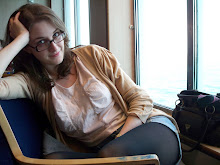'Choose an iconic image and discuss why and how it has become iconic. This will involve you discussing the history of that image as it has been used, re-used and adapted at different moments and in different places.'
For the second essay I will be writing, I have chosen the question on iconic images. It's probably the most open of all the questions we can choose from, which means I can tailor the essay content to something of my own interest. The image I have chosen to study is the well-known photograph from the Tiananmen Square protests in Beijing in 1989. The photograph of one man standing in front of a column of tanks gained iconic status around the globe through international news. A key moment in modern Chinese history, the image stands for political oppression, a fight for democracy and the bravery and courage of human will.
I plan on discussing the history behind the image. The history of Tiananmen Square; the original purpose this square was built for, and brief political history of the leaders and protestors involved and the incidents which started this protest.
Why and how the image is iconic; through the discussion of its connotations, metaphorical meanings, how it summarised the current experiences, it's symbolism of values and concepts, and how it has played a part in public political culture.
I'll also look at other representations of this image. How various artists/illustrators have adapted it accordingly for new situations, whether political or cultural.
For the second essay I will be writing, I have chosen the question on iconic images. It's probably the most open of all the questions we can choose from, which means I can tailor the essay content to something of my own interest. The image I have chosen to study is the well-known photograph from the Tiananmen Square protests in Beijing in 1989. The photograph of one man standing in front of a column of tanks gained iconic status around the globe through international news. A key moment in modern Chinese history, the image stands for political oppression, a fight for democracy and the bravery and courage of human will.
I plan on discussing the history behind the image. The history of Tiananmen Square; the original purpose this square was built for, and brief political history of the leaders and protestors involved and the incidents which started this protest.
Why and how the image is iconic; through the discussion of its connotations, metaphorical meanings, how it summarised the current experiences, it's symbolism of values and concepts, and how it has played a part in public political culture.
I'll also look at other representations of this image. How various artists/illustrators have adapted it accordingly for new situations, whether political or cultural.
 Political and social cartoonist-illustrator-caricaturist, Gerald Scarfe is known for his witty observations on politics and world news. Keeping in tune with his usual style, Scarfe’s Seven Deadly Sins is a book which looks at the classic sins but with a modern Scarfe twist. For example; prostitution and pornographers feature under Lust, and the deterioration of the environment comes under Sloth.
Political and social cartoonist-illustrator-caricaturist, Gerald Scarfe is known for his witty observations on politics and world news. Keeping in tune with his usual style, Scarfe’s Seven Deadly Sins is a book which looks at the classic sins but with a modern Scarfe twist. For example; prostitution and pornographers feature under Lust, and the deterioration of the environment comes under Sloth.












